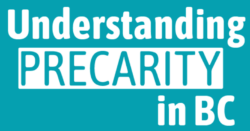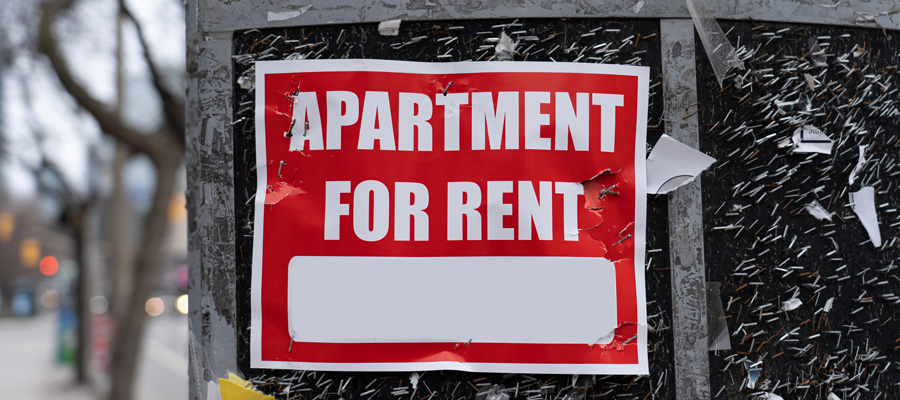Trapped in the wage gap

On June 1, BC’s minimum wage is going up to $17.40 per hour. Despite this welcome pay raise for the 240,000 lowest-paid workers in the province, the minimum wage remains over $3 per hour lower than the lowest living wage in BC ($20.64 in Dawson Creek). In BC’s largest cities, Metro Vancouver and Greater Victoria, the gap between the minimum wage and the living wage is $8 per hour.
New data obtained by CCPA-BC from Statistics Canada reveals that one third of BC’s paid employees earn less than the living wage in their community—more than 740,000 people.
Over 400,000 people earn less than $20 per hour, a wage lower than the lowest living wage calculated in the province. Even with the minimum wage increase, far too many workers will remain trapped in the low wage gap, earning less than it costs to live in our province. These workers face impossible choices—buy groceries or heat the house, keep up with bills or pay the rent on time. The result can be spiraling debt, constant anxiety and long-term health problems. It often means working long hours, sometimes at multiple jobs, just to pay for necessities.
BC is in a serious affordability crisis. Renters continue to face rapidly increasing rents, especially when they have to move. The combination of sky-high rents, elevated food prices and low incomes explains the surge in demand for charitable services, with increasing numbers of workers forced to turn to food and rent banks.
The living wage is the hourly rate that full-time workers need to earn to support a family. It covers the necessities, offers an escape from severe financial stress and allows participation in the social, civic and cultural lives of their communities. It is based on the actual costs of living in a particular community and affords a decent, if still very modest, standard of living without the extras many of us take for granted. The living wage does not cover credit card, loan or other debt payments, savings for retirement, or for a downpayment on a home or the extra costs of caring for disabled, seriously ill or elderly family members. Across BC, the living wage ranges between $20.64 in Dawson Creek and $26.51 in Clayoquot Sound.
We examined the over 400,000 British Columbians who earn less than $20 per hour and the 650,000 people who earn less than the living wage in seven of the province’s largest urban areas using data obtained through a custom tabulation from Statistics Canada’s Labour Force Survey.
Our analysis reveals large wage inequalities based on gender and race in BC. Shockingly, half of the racialized women working in Metro Vancouver earn less than the region’s living wage of $25.68 per hour.
Who earns less than $20 per hour in BC?
413,100 BC workers earned less than $20 per hour in 2023 (18% of all paid employees in the province, or nearly 1 in 5).
The majority of workers earning less than $20 per hour are women.
244,700 workers earning less than $20 per hour are women (59%).
- The majority of workers earning less than $20 per hour are 25 or older, not teenagers and young adults as often claimed.
- 183,800 workers earning less than $20 per hour are between 15 and 24 years old (44%).
- 229,400 workers earning less than $20 per hour are 25 or older (56%).
- 123,400 workers earning less than $20 per hour are between 25 and 44 years old (30%).
- 81,500 workers earning less than $20 per hour are between 45 and 64 years old (20%).
- 24,500 workers earning less than $20 per hour are 65 or older (6%).
More than half of workers earning less than $20 per hour are racialized although only 38% of paid employees in British Columbia are racialized.
- 213,800 workers earning less than $20 per hour are racialized (52%).
- Racialized workers are more likely to be paid less than $20 per hour than their counterparts (22% of all racialized workers earn less than $20 per hour compared to only 15% of non-racialized workers)
6% of workers earning less than $20 per hour identify as Indigenous (22,900 people).
Low-wage work is widespread across the province. In most large urban communities, roughly 18% of all workers earn less than $20 per hour with the notable exception of Nanaimo and Chilliwack-Hope (Statistics Canada designation), where a larger share of workers earn less than $20 per hour and Greater Victoria, where a smaller share of workers earn less than $20 per hour.
Share and number of workers earning less than $20 per hour by city

Share and number of workers earning less than $20 per hour by economic region

Who earns less than the living wage in Metro Vancouver?
Nearly half a million workers in Metro Vancouver – 495,600 or 37% of all paid employees in the region – earn less than the living wage of $25.68 per hour.
The majority of workers earning less than $25.68 per hour in Metro Vancouver are women.
- 283,100 workers earning less than $25.68 per hour are women (57%).
The majority of workers earning less than $25.68 per hour in Metro Vancouver are 25 or older.
- 163,600 workers earning less than $25.68 per hour are between 15 and 24 years old (33%).
- 331,900 workers earning less than $25.68 per hour are 25 or older (67%).
- 184,900 workers earning less than $25.68 per hour are between 25 and 44 years old (37%).
- 125,000 workers earning less than $25.68 per hour are between 45 and 64 years old (25%).
- 22,000 workers earning less than $25.68 per hour are 65 or older (4%).
Nearly two thirds of Metro Vancouver workers earning less than $25.68 per hour in Metro Vancouver are racialized although only 55% of paid employees are racialized.
- 317,200 workers earning less than $25.68 per hour in Metro Vancouver are racialized (64%).
- Racialized workers are more likely to be paid less than $25.68 per hour than their counterparts (44% of all racialized workers earn less than the living wage compared to only 30% of non-racialized workers)
Half of all racialized women working in Metro Vancouver earn less than the living wage of $25.68 per hour.
- 49% of racialized women working in Metro Vancouver earn less than the living wage, 181,500 people. In contrast, 38% of racialized men earn less than the living wage, as do 35% of white women and 25% of white men.
BC can and should close the gap between the minimum and living wages. Here’s how:
Despite the minimum wage increase to $17.40 per hour, a strikingly large gap remains between the minimum wage and living wages in communities across BC. This gap has grown significantly in the last few years, leaving hundreds of thousands of workers struggling to make ends meet in every part of the province. Closing this gap is key to address the affordability crisis that workers face across BC.
Over 400 BC businesses have stepped up to be living wage employers, paying both direct and contract employees a living wage. We commend these employers for doing their part to reduce working poverty and encourage others to follow their lead.
However, voluntary action alone cannot solve the affordability crisis. The BC government needs to take steps to both lift wages and lower the cost pressures people face so that all workers can thrive.
The large gap between the living and the minimum wages represents a challenge for everyone. For employers who want to do the right thing, paying living wages that are much higher than the minimum wage their competitors pay can be challenging, which unfortunately incentivizes competition based on low wages.
A strikingly large gap remains between the minimum wage and living wages in communities across BC.
The BC government should raise the minimum wage to $20 per hour to narrow the gap between the minimum wage and the living wage, benefitting over 400,000 people of all ages, working in every region of the province. A $20 minimum wage would also help to reduce BC’s large gender and racial pay inequities.
Boosting the earnings of low wage workers will stimulate the local economy because these workers are likely to spend almost all of their extra income in their communities, for example, supporting local businesses by eating out once in a while and participating more actively in community activities.
The BC government should also follow the example of many businesses and municipalities and become a living wage employer, embedding living wage policies in its own procurement systems.
In addition to higher minimum wages, BC workers need pay equity legislation, stronger protections from wage theft and other workplace rights violations, and meaningful access to collective bargaining so they can exercise the right to come together to negotiate better wages and benefits if they so choose.
Of course, at $20 per hour the minimum wage would remain lower than the lowest living wage in any BC community, and living wages will continue to outpace inflation unless we get a handle on runaway rent costs, the most expensive item in most household budgets.
Recently, the federal and provincial governments have made efforts to address the shortage of homes, especially affordable ones. Public investments to create affordable housing must be scaled up and coupled with stronger rent controls because easing the overall housing shortage will take time and current sky-high rent increases between tenancies are putting an increasing number of lower-income renters at risk of homelessness (read more in Time to scale up: next steps for non-market housing in BC and Vacancy control: taking the next step on housing affordability).
BC needs to tackle the growing issue of food unaffordability and food insecurity.
Additionally, BC needs to tackle the growing issue of food unaffordability and food insecurity, for example through an affordable food strategy combined with more generous income supports to alleviate financial pressure on low- and middle-income earners.
An expansion of BC’s transit network to provide publicly operated, low-cost transit options in rural areas, an inter-community express bus service and free transit to youth 18 and under would significantly reduce transportation costs for many households (read more in Connecting BC: A 10-year vision for public transit throughout BC). This would build on recent public investments in services that make life more affordable for everyone, such as expanding access to low-cost child care, and the introduction of a public dental care plan and pharmacare.
Far too many workers struggle to make ends meet. As the next provincial election looms, it is imperative that all political parties put forward tangible strategies in response to the affordability crisis that workers continue to face across BC.
Regional fact sheets
Click on the regions below to download their respective fact sheets:
This research is co-published by Living Wage for Families BC. Funding was also received from CUPE Metro.

Topics: Economy, Employment & labour, Poverty, inequality & welfare

